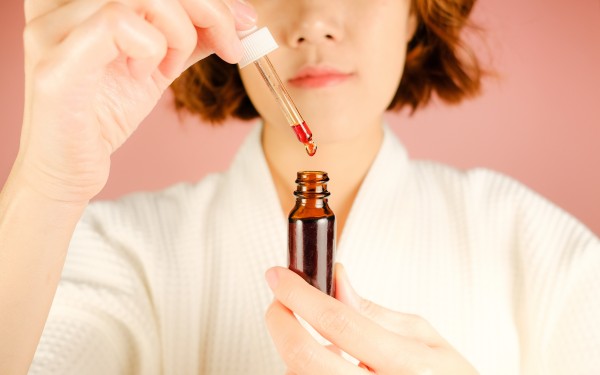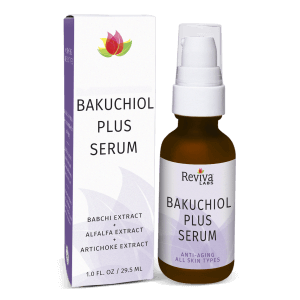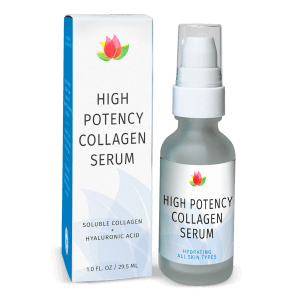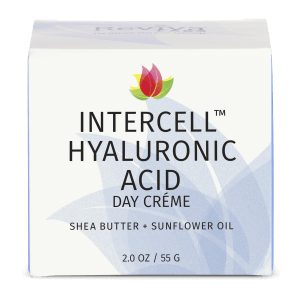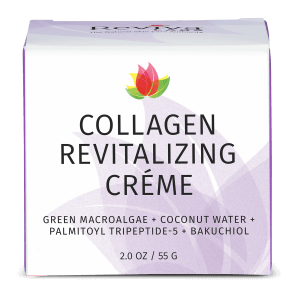Reviva Labs, Skin Care
The Best Anti-Aging Skincare Routine for Your 30s
Turning 30 can feel like a milestone in many ways, and it’s a significant period for your skin as well. The carefree days of your 20s may have allowed you to get away with minimal skincare effort, but your 30s often bring new challenges. The first fine lines may start to appear, your skin’s elasticity might decrease, and you may notice a change in texture. Establishing an effective anti-aging skincare routine in your 30s is crucial for maintaining youthful, glowing skin as you age.
Understanding Skin Changes in Your 30s
As you enter your 30s, your skin begins to produce less collagen, the protein responsible for keeping your skin firm and plump. According to research, collagen production decreases by about 1% each year starting in your mid-20s. This decline leads to the gradual development of fine lines and wrinkles. Additionally, your skin’s natural exfoliation process slows down, resulting in a duller complexion and uneven texture.
Hormonal changes can also impact your skin in your 30s, sometimes leading to unexpected breakouts or changes in skin type. It’s a time when balancing hydration, maintaining elasticity, and addressing the early signs of aging become priorities in your skincare routine.
Gentle Cleansing: The Foundation of Your Routine
The first step in any skincare routine is cleansing, but in your 30s, the focus should shift to using a gentle cleanser that doesn’t strip your skin of its natural oils. Over-cleansing or using harsh products can lead to dryness and irritation, exacerbating the appearance of fine lines. Opt for a sulfate-free cleanser that effectively removes dirt, oil, and makeup while preserving your skin’s moisture barrier. Cleansing twice a day, once in the morning and once before bed, helps keep your skin clean and ready to absorb the active ingredients in your subsequent skincare products.
Exfoliation: Renew and Refresh
Exfoliation becomes increasingly important in your 30s as your skin’s natural cell turnover rate begins to slow down. Regular exfoliation helps to remove dead skin cells that can make your complexion look dull and emphasize the appearance of fine lines. Incorporate a gentle exfoliant into your routine two to three times a week. Look for exfoliants with alpha-hydroxy acids (AHAs) or beta-hydroxy acids (BHAs) that promote cell turnover and help reveal smoother, brighter skin.
While physical exfoliants (scrubs) can be effective, they should be used with caution to avoid causing micro-tears in the skin. A chemical exfoliant, such as one containing lactic acid or salicylic acid, is often a gentler and more effective option for addressing the early signs of aging.
Hydration: The Key to Plump Skin
One of the most critical components of an anti-aging routine is hydration. As you age, your skin tends to lose moisture more easily, which can lead to a loss of elasticity and the formation of wrinkles. Incorporate a hydrating serum that contains hyaluronic acid, a powerful humectant that draws moisture into the skin and helps maintain a plump, youthful appearance.
In addition to a serum, a rich moisturizer is essential for locking in hydration. Choose a moisturizer that’s formulated for your skin type but provides enough moisture to combat dryness. In your 30s, you might also consider using a night cream that supports skin regeneration while you sleep. Night creams are often richer and more emollient, providing the extra hydration your skin needs overnight.
Antioxidants: Protect and Prevent
Antioxidants are your skin’s best defense against environmental stressors such as pollution and UV radiation, both of which can accelerate the aging process. Incorporating an antioxidant-rich product into your routine can help protect your skin from damage and promote a more youthful complexion. Vitamin C is a potent antioxidant that not only helps to brighten the skin but also stimulates collagen production.
A Vitamin C serum applied in the morning can work wonders for your skin by neutralizing free radicals and enhancing your skin’s natural radiance. Look for a stable form of Vitamin C, such as ascorbic acid, and apply it after cleansing and before moisturizing.
Sun Protection: The Non-Negotiable Step
If there’s one skincare step you should never skip in your 30s, it’s applying sunscreen. Sun damage is the leading cause of premature aging, and it’s cumulative—meaning that the effects of sun exposure build up over time. Daily use of a broad-spectrum sunscreen with an SPF of at least 30 is crucial for protecting your skin from harmful UV rays that cause wrinkles, hyperpigmentation, and even skin cancer.
Even on cloudy days or when you’re indoors, UV rays can penetrate windows and still affect your skin. Applying sunscreen should be the final step in your morning skincare routine, and it’s important to reapply throughout the day, especially if you’re spending time outdoors.
Targeted Treatments: Addressing Specific Concerns
In your 30s, you may start to notice specific skin concerns such as dark spots, under-eye circles, or deeper lines around the mouth and eyes. Incorporating targeted treatments can help address these issues. For dark spots, look for products containing ingredients like niacinamide or retinol that help to fade hyperpigmentation and even out skin tone.

For the delicate under-eye area, an eye cream that contains peptides or caffeine can help to reduce puffiness and dark circles. Eye creams are specially formulated to be gentle on the thinner skin around your eyes, providing hydration and protection without causing irritation.
Retinoids, a derivative of Vitamin A, are another powerful ingredient to consider in your anti-aging routine. They increase cell turnover and boost collagen production, making them highly effective in reducing the appearance of fine lines and wrinkles. Start with a lower concentration if you’re new to retinoids and gradually increase usage as your skin builds tolerance.
Maintaining Elasticity: The Role of Collagen
Collagen is the structural protein that gives your skin its firmness and elasticity. As mentioned earlier, collagen production naturally declines with age, but there are steps you can take to support its synthesis and maintain a youthful appearance. Collagen-boosting products, such as those containing peptides or growth factors, can help to strengthen your skin’s structure and improve its overall resilience.
In addition to topical treatments, you can also support collagen production through your diet. Foods rich in Vitamin C, zinc, and amino acids are known to promote collagen synthesis. Bone broth, fish, and leafy greens are excellent dietary choices to support your skin from the inside out.
Lifestyle Factors: Holistic Approach to Anti-Aging
While a solid skincare routine is essential, your lifestyle choices play a significant role in how your skin ages. Staying hydrated by drinking plenty of water is fundamental to maintaining healthy skin. Dehydration can make your skin look dull and accentuate fine lines.
Getting enough sleep is another critical factor. During sleep, your skin goes into repair mode, regenerating and healing itself from daily damage. Aim for 7-9 hours of quality sleep each night to allow your skin to fully rejuvenate.
A balanced diet rich in antioxidants, healthy fats, and lean proteins supports your skin’s health and appearance. Avoiding excessive sugar and processed foods can help prevent glycation, a process that damages collagen and elastin, leading to premature aging.
Managing stress is also crucial. Chronic stress can trigger inflammation and hormonal imbalances that negatively affect your skin. Incorporating stress-reducing practices such as yoga, meditation, or regular exercise can help maintain a calm and balanced complexion.
Consistency is Key: Building a Sustainable Routine
The best anti-aging skincare routine is one that you can stick to consistently. It’s better to have a simple routine that you follow diligently than a complicated one that you can’t keep up with. Start with the basics—cleanser, moisturizer, and sunscreen—and gradually introduce additional products like serums, exfoliants, and targeted treatments as your skin becomes accustomed to them.
Remember, it’s important to listen to your skin and adjust your routine as needed. What works in your early 30s may need to be tweaked as you approach your late 30s. Be patient and give your skin time to respond to new products.
The Importance of Regular Skin Check-ups
Finally, it’s important to schedule regular visits with a dermatologist, especially as you enter your 30s. A dermatologist can help you identify any changes in your skin, provide professional advice on your skincare routine, and recommend treatments that are best suited for your skin type and concerns. Early detection of skin issues can prevent them from becoming more severe and ensure that your skin stays healthy and vibrant.
Aging is a natural process, and while we can’t stop time, we can certainly take steps to age gracefully. By following a thoughtful and well-rounded skincare routine in your 30s, you can maintain a youthful, radiant complexion for years to come.
Embrace Your 30s with Confidence
Your 30s are a time to embrace the changes in your skin and take proactive steps to maintain its health and vitality. With the right skincare routine, you can keep your skin looking its best while addressing the early signs of aging. By focusing on gentle cleansing, regular exfoliation, hydration, and sun protection, and incorporating targeted treatments as needed, you’ll set the foundation for beautiful skin well into your 40s and beyond.
Embrace your 30s with confidence, knowing that you’re giving your skin the care and attention it deserves. Aging is a journey, and with the right approach, you can ensure that your skin stays radiant and resilient every step of the way.





